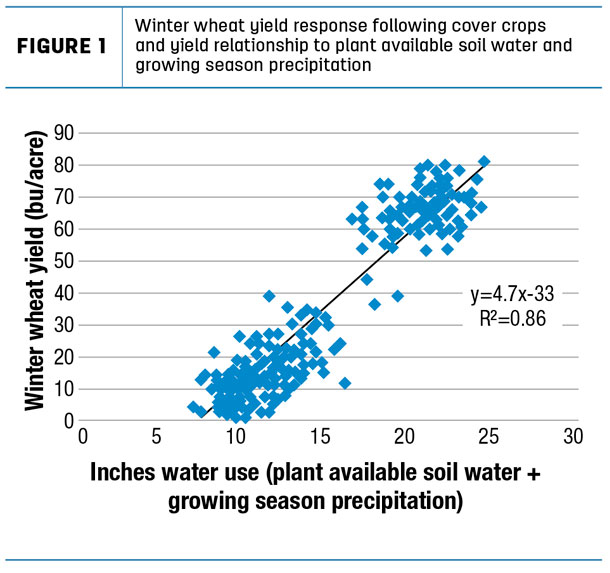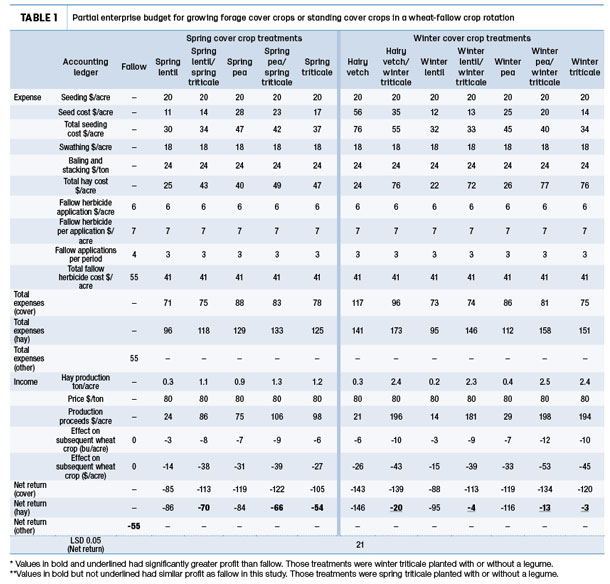When comparing crop response across environments, one must consider both precipitation and evapotranspiration (water loss through both evaporation and transpiration).
In layman’s terms, an inch of precipitation goes a lot further growing a crop in North Dakota than in Arizona. These semi-arid regions rely on fallow to capture and store soil moisture for subsequent crops, and growing a cover crop in place of fallow can have a negative effect on soil water storage.
This is a point often overlooked by many, except those producers who have experienced reduced crop yields after having grown a cover crop. In fact, some cover crop advocates have gone so far as to claim “cover crops do not use water.” Even cactus requires some water.
Another term that has been used loosely in recent years is “growing a cover crop for forage.” If that is the case, then the question becomes “Are all forages cover crops?” I think we need to better define “forage cover crops” – as “in addition to producing forage” also being grown with the intent to promote soil health, reduce soil erosion or provide other agronomic perceived benefits. This may require managing the forage cover crop differently than if it was solely grown for forage purposes.
For example, with a forage cover crop this might mean leaving more crop residue after harvest to reduce soil erosion and capture more precipitation or grow a broadleaf in a traditional grass-only cropping system to increase diversity and weed control options.
A long-term cover crop study was initiated in southwest Kansas near Garden City in 2007 to compare growing a cover crop (left standing) or forage cover crop (hayed) to no-till fallow ahead of winter wheat in a wheat-fallow crop rotation. To our knowledge, this is one of the oldest existing cover crop studies, particularly in a semi-arid environment (19.2 inches precipitation and 70.3 inches open-pan annual evaporation).
Wheat yields were highly variable over the course of the 11-year study based on growing season precipitation. Years with above-average precipitation resulted in increased wheat yields, and growing a cover crop in place of fallow had little effect on wheat yield. However, in dry years, growing a cover crop in place of fallow reduced wheat yields up to 70 percent.
Based on these results, we found a cover crop could be grown in place of fallow with little negative effect on wheat yield when the wheat yield potential following fallow (no cover crop) was greater than 55 bushels per acre. If wheat yield potential was less than 55 bushels per acre, one should expect some yield reduction if a cover crop was grown.
Wheat yield was highly correlated to plant-available water at planting (Figure 1), and growing a cover crop in place of fallow reduced plant-available water.

For every inch of plant-available water at wheat planting, about 5 bushels of wheat was produced. No differences in wheat yield were observed whether the cover crop was left standing or harvested for hay, although there was slightly less soil moisture following forage cover crops than cover crops left standing (due to less crop residue and more soil water evaporation).
This is great and encouraging news for those wanting to grow a forage cover crop, since a forage crop can provide valuable output that helps offset potential yield reductions in subsequent cash crops. In other words, if the forage cover crop provides forage production worth more than the cost to implement fallow (not free) plus the yield reduction of the subsequent crop, then growing a forage crop can be more profitable.
We found several things that affected profitability of growing cover crops in place of fallow. First, growing a cover crop left standing (no forage) was always less profitable than fallow. This was due to no revenue received from the cover crop coupled with reduced wheat yields.
Second, in drought periods when wheat yield potential was less than 20 bushels per acre using fallow, growing a forage cover crop in place of fallow was less profitable than fallow. This was due to low forage yields and a high yield reduction of the subsequent crop following the forage cover crop. Therefore in drought periods, or in very dry regions, it may not work to grow a forage crop in place of fallow.
We have conceived and proposed the concept of “flex-fallow” to manage around these variable dry periods. Flex-fallow is the concept of measuring available soil water with a soil moisture probe and evaluating the long-term precipitation outlook at the time one would make the decision to plant a forage cover crop.
Based on the current soil moisture conditions and precipitation outlook, one would plant a forage cover crop in years with ample precipitation or not plant and leave the land fallow in dry years. Flex-fallow, in theory, should take advantage of the extra moisture in good years and crop less intensively in dry periods when fallow is most beneficial.
Third, growing a forage crop that produced high tonnage and had low seed cost (i.e., single annual grass species such as oats versus cocktail mixtures) were most profitable. A producer can easily get too much money invested in a cocktail mixture that can make growing forage cover crops not economically justifiable. Our forage cover crops that were more profitable than fallow had seed costs that averaged $20 per acre and produced dry matter yields greater than 4,500 pounds per acre, and those treatments with forage yields between 2,000 and 3,000 pounds per acre had similar net profit as fallow (Table 1).
Click here or on the image above to view it at full size in a new window.
To summarize, for the readers who are interested in growing forages, these are encouraging findings. Cover crops grown for forage can be profitable as long as there is enough precipitation in the year or your area to offset the reduction in subsequent grain crop yields. Don’t expect an increase in subsequent grain yields by growing a cover crop.
For best economic returns, grow a forage cover crop that produces high tonnage and has low seed cost. In the future, we will share results of a study where we evaluated growing double-crop forage cover crops after wheat and give findings of an interesting twist on intensifying cropping systems with forages. ![]()
References omitted but are available upon request. Click here to email an editor.
John Holman is a professor of cropping systems/agronomy at Western Kansas Agricultural Research Center - Kansas State University. Email John Holman.










